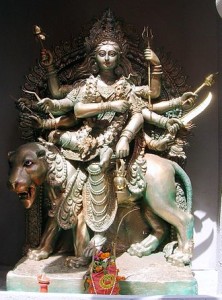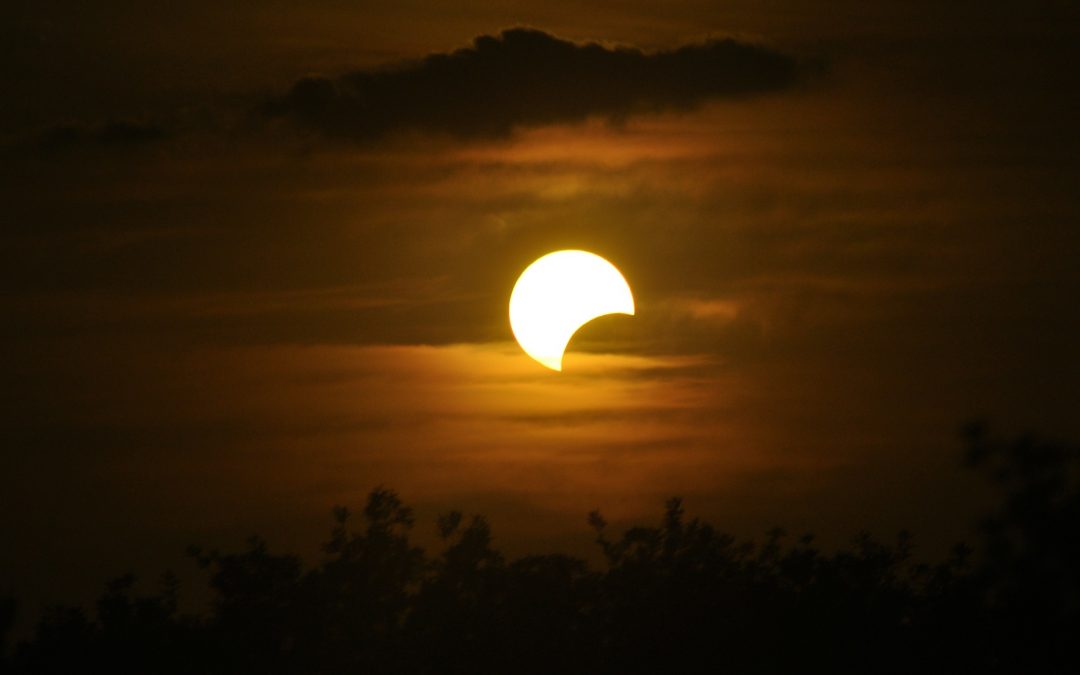
by Somya Devi | Jan 3, 2019 | Astrology, Conjunctions, Eclipses
The Moon is waning towards total darkness and will reach exact conjunction with the Sun for the “New Moon” moment on Saturday, January 5th, 2019, at 5:28 pm PST. The Sun and Moon will join at 21° sidereal Sagittarius, aligned closely with the center of the Milky Way galaxy, in Purva Ashada nakshatra. The Sun and Moon will be in close enough proximity with Ketu (at 3° sidereal Capricorn), to bring about the first eclipse of the year. The partial solar eclipse will occur over eastern Asia and the Pacific, reaching its maximum at 5:41 pm PST, and visible from eastern China, Mongolia, and Russia, as well as Japan, the Korean peninsula, and southwestern Alaska.
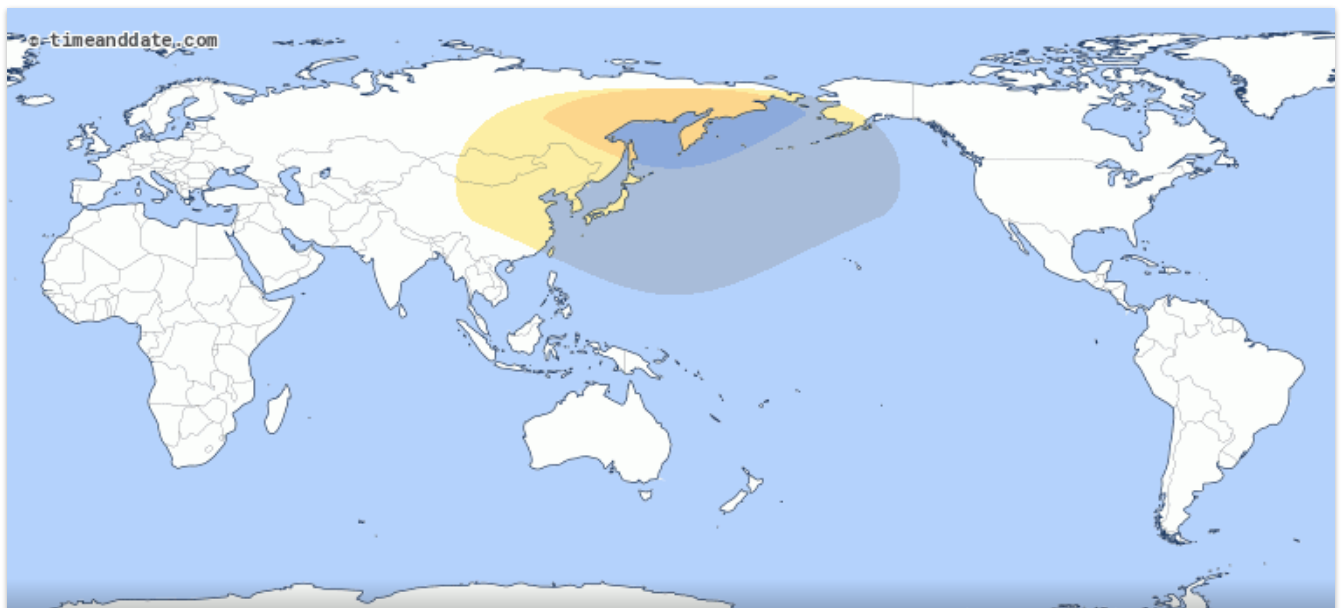
Sagittarius
This new Moon solar eclipse will occur in sidereal Sagittarius, setting the tone for the coming month with a Sagittarian mood. Sagittarius is an active fire sign ruled by Jupiter, the planet of principles and beliefs. This new Moon will bring forward a healthy dose of principles and opinions, but with the Sun partially blocked by the Moon’s shadow, we may feel overly emotional about these and at the same time, lacking the power to do anything. (You can also relate that sentiment with the area of life mentioned in the Forecast section below). Within Purva Ashada nakshatra, however, we may find more courage from within than seems readily at hand.
Purva Ashada
This nakshatra spans from 13°20′ to 26°40’ of sidereal Sagittarius, and means the former “invincible” or “unconquered.” It is ruled by Apah (or Apas), the water goddess. Its animal symbol is the male monkey, which brings a playful energy here. Its planetary ruler is Venus and thus also has associations with goddess Lakshmi. The three stars that make up this nakshatra in the night sky take the shape of a fan, and the fan is another symbol for this asterism.
Under its invincible nature, the Purva Ashada new moon is a powerful time to find our courage, despite the feelings of limitation that can be brought on by a solar eclipse. Through the symbol of the fan, we can see one who is adorned in luxury, or one who may hide behind a fan in humility or mystery, but there is a great power that can be hiding there, especially feminine power. The fan can be used to sustain us under pressure, bringing a cooling breeze that feels like the grace of god when the world gets too hot. Though our power may feel hidden, it is there to be tapped into with focus and dedication.
Saturn and Mercury
Saturn and Mercury both join this new Moon in Sagittarius. Saturn is going to have an even stronger role in our lives than usual in 2019, as he will be joining Ketu in close conjunction, within one degree, for over five months. Saturn in Sagittarius can help us to have not only the courage to do what we believe is right, but the stamina and dedication to get it done. Though we may feel a bit muddled by the eclipse (and the current combust nature of Saturn, so close to the Sun), Saturn’s determination will reveal himself more as the month goes on.
There will be a planetary war, however, between Saturn and Mercury, on the 12th and 13th of this month, when the two come within one degree of each other. When two planets are at war, contending for our attention in the same part of the sky, both will suffer, and the things they represent. With Mercury at war, our intellects will not feel as sharp, and it may be hard to pay attention to details or communicate clearly on these days. With Saturn at war, keeping our eye on long-term goals may be hard, and we may feel temporarily deflated and struggle at work. The four areas in your chart ruled by Saturn and Mercury may also suffer, or feel at odds with each other, during this time.
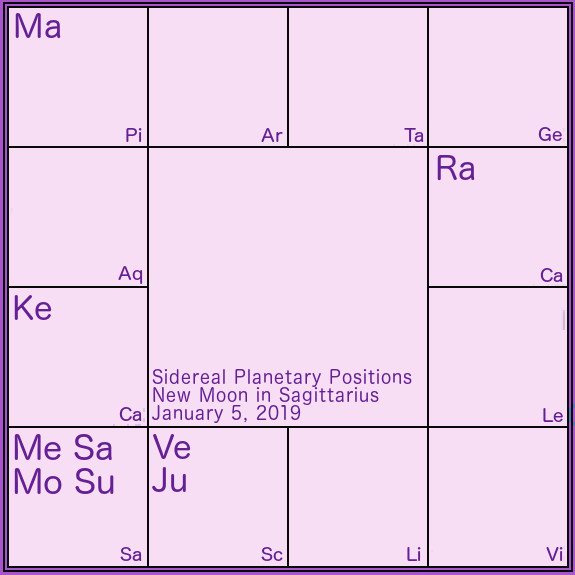
The Solar Eclipse
Though the eclipse may not be visible where you are, its effects are still tangible, and things are probably already gearing up with intensity in the area of your life indicated by Sagittarius. Though Rahu and Ketu are still in Cancer and Capricorn (since August of 2017), they are coming very close to transiting into Sagittarius and Gemini (which will happen in March), and this eclipse is giving us a taste of what is to come during the next nodal transit and the eclipses to occur in 2019 and 2020.
Forecast
Here are a few of the areas where challenges may be occurring due to this eclipse (and where you need to do the work), based on your Vedic rising sign (there can also be others, when examined specifically, or in a personal natal chart analysis):
Aries — education, faith, foreign travels
Taurus — sudden changes, upheaval, secrets coming to light
Gemini — partnerships, love, business relationships
Cancer — health issues, disputes, litigation, pets
Leo — children, wisdom, authority
Virgo — the heart, the mind, home, mother
Libra — siblings, will, skills
Scorpio — the family, wealth, the mouth
Sagittarius — self-identity, place in the world
Capricorn — loss, loneliness
Aquarius — community, friends, income
Pisces — career, social status
Please join me and my fellow astrologers on January 25th for the 2019 Jyotish Transit Summit Webinar. The webinar is free, and you can register through this link.
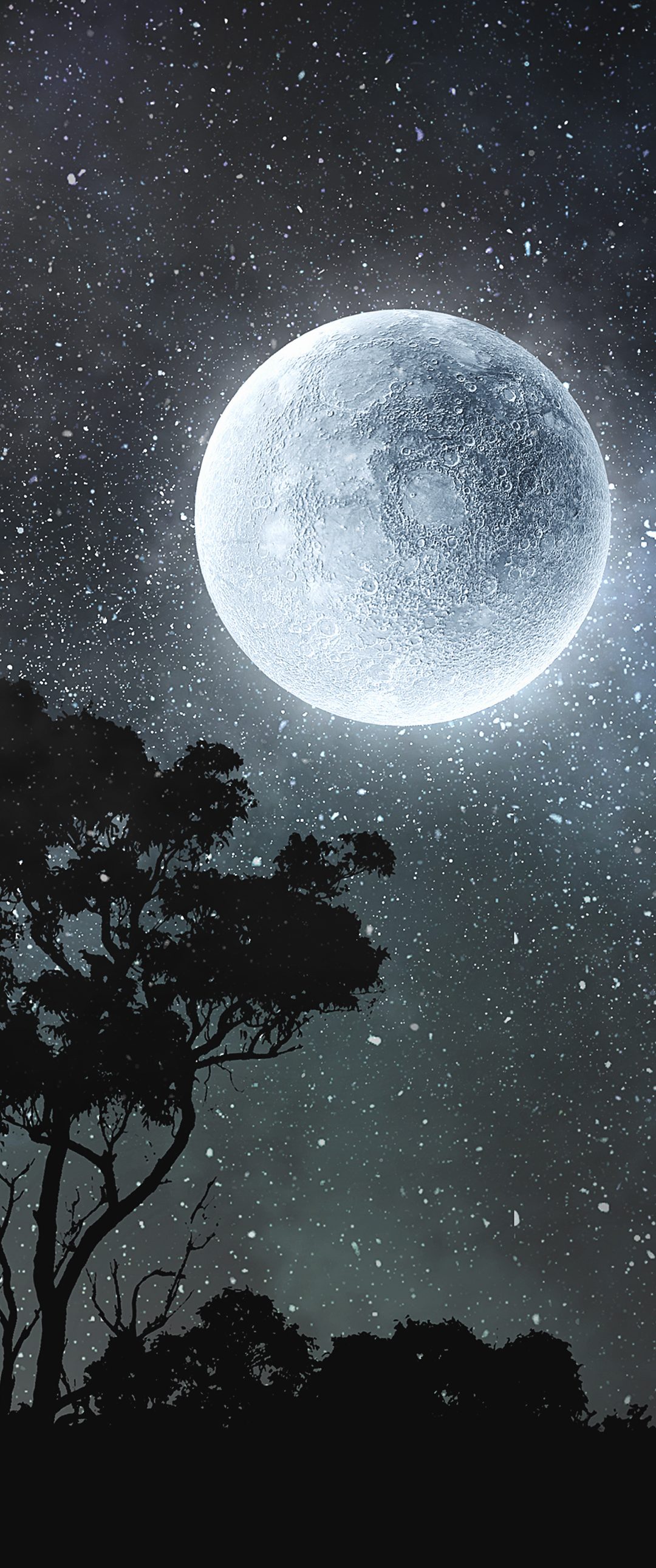
by Somya Devi | Nov 21, 2018 | Astrology, Conjunctions, Retrograde
Full Moon in Taurus
The Moon is waxing towards its brightest point, to align fully opposite the Sun for a full Moon in Taurus at 9:39 pm PST on Thanksgiving night, Thursday, November 22nd. The Moon will be in its sign of exaltation in early sidereal Taurus, in the Vedic nakshatra of Krittika, opposite the Sun in Scorpio. Mars, Jupiter and a retrograde Mercury all aspect this full Moon, while Venus rules over it in Taurus. With the Moon and the mind happy and grounded in this fertile earth sign, this is truly a fitting time to let the heart settle and give thanks for what is.
Exaltation in Taurus
We began this lunar cycle with the Moon dark and approaching debilitation, on November 7th. The Moon is fully “debilitated” in the third degree of Scorpio (although Sun & Moon conjoined to begin this cycle near the end of Libra). In the passionate water sign of Scorpio, the mind becomes aware of its most sensitive points, and can go through turbulent emotions as it rides the waves under Mars’ rulership.
Moon is considered “exalted” in the opposite sign of Taurus, where we find this week’s full Moon. Taurus is an earth sign ruled by Venus. The earth element helps our minds and hearts to find more stability and become grounded, and our emotions are less likely to be tossed about by external forces. Taurus is ruled by Venus, the planet that ultimately helps us to find ways to be happy, so there is a natural inclination towards seeing the beauty and harmony of life when the Moon is here.
Venus is still transiting his own sign of Libra, and getting gradually stronger as he picks up speed after six weeks in retrograde motion. (Though feminine in nature, Venus, like all planets in Jyotish, gains a masculine pronoun when personified.) Venus helps the mind to be happy when the Moon is under his rule, because Venus drives us towards pleasure and happiness, and helps us to look for and see beauty. This is a great outlook for approaching the Thanksgiving holiday, especially when difficult family dynamics may be present. On this holiday where there is a tendency to overindulge in consumable pleasures, however, be especially mindful this year, as Venus (and Jupiter) could help to push that to extremes.
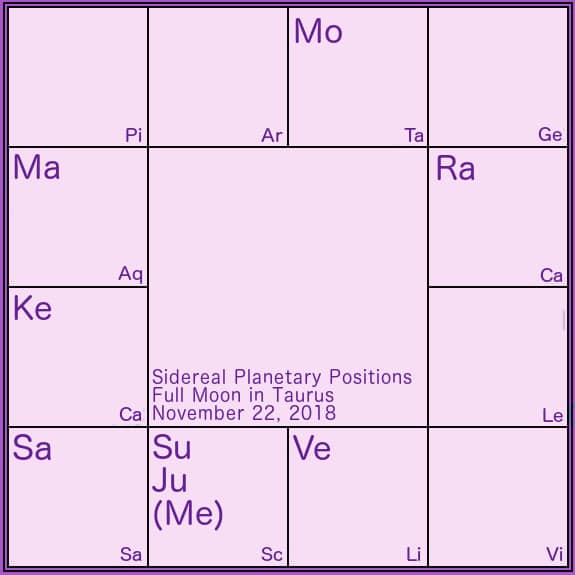
Krittika Nakshatra
Within the Vedic system, Krittika nakshatra spans from 26°40′ Aries to 10° Taurus. This star-sign is known as “the cutter” and is represented by an axe, a razor blade, or a flame. Agni, the Lord of Fire, rules here, and his sharp and transforming nature drive the energy of this nakshatra. Though we are experiencing the beauty-seeking nature of Venus, we are also receiving the purifying and sattvic influence of the Sun, who rules this nakshatra, while the Moon transits here.
This nakshatra can be located in the sky as the cluster of seven stars also known as the Pleiades. In Vedic mythology, these correlate with the wives of the seven sages who found and nursed the baby Kartikeya, the son that Shiva and Parvati birthed through the vehicle of the river Ganga. There is a maternal and nurturing quality to this star, in addition to its power to help us to cut through the unnecessary in our processes of purification. Fittingly, the Indian saint “Amma” (Amritanandamayi) was born under Krittika nakshatra, and demonstrates these qualities of being a nurturing mother to all as well as a powerful sattvic purifier.
Aspects: Mars, Jupiter & Retrograde Mercury
In addition to full illumination from the Sun, this full Moon is also receiving light and energy from Mars, Jupiter, and Mercury (though Jupiter is quite combust, within three degrees of the Sun). Mars’ influence can stimulate the mind into a more rajasic state, and can add a bit of heat and tension. With Mercury also in retrograde motion, be very aware around getting into arguments or trying to explain (or re-explain) your point of view to others. Though Jupiter sends some benefic and inspiring influence, the loftiness of your ideas may be burned up and lost as you attempt to communicate from a philosophical or idealistic place. Mercury will continue in retrograde motion through the next New Moon, on December 6th.

by Somya Devi | Oct 4, 2018 | Astrology, Conjunctions, Planets Changing Signs, Retrograde
I love this time of year. Having passed the equinox on September 22nd, the dark of night comes noticeably earlier. The air temperature, moisture and barometric pressure have taken a definite turn. And the instinct to nest and cozy up at home is on.
From now through the spring equinox, we in the northern hemisphere are in the yin portion of the year, where nighttime exceeds day, and our energy is more naturally directed inward. With fewer hours to be out in the world acting, there is more time to spend still and being. This is a time for the mystic feminine to thrive.
Monday, October 8th will bring a dark Moon night to start the first lunar cycle fully in the yin season. At 8:47 pm PDT, the Sun and Moon align at 21° sidereal Virgo, in Hasta nakshatra. This is a great way to start a season of grounding into ourselves, nurturing our feminine essence and our creative potential. Fittingly, this cycle brings with it the Navaratri festival, the nine nights of celebrating the goddess in her many forms.

Virgo Cycle
Virgo is the feminine earth sign ruled by Mercury. In Sanskrit, Virgo is Kanya, literally the “girl” or the “maiden.” This sign relates to fertility, as well as a pure feminine being. Virgo’s nature compels us to try to take care of everyone and all the details, and as the Sun moves into Libra, his sign of debilitation, later this month, we must be careful not to overexert ourselves and become depleted.
With exalted Mars and Ketu still transiting the fifth from Virgo, this month will call us to explore our creative potential, and what fears and resistance we may hold around that. With Saturn transiting the fourth and Mercury, Jupiter and Venus in the second, there is a lot of energy going towards the home and family this month.
Hasta
Within Virgo, the Sun and Moon align in Hasta nakshatra to begin this lunar cycle. Hasta is “the hand,” and implies all things crafty. We find potential to take up any number of manual skills or projects this month, as well as utilizing the intellect (Mercury) to craft our situations towards our goals. Ruled by the Moon, this star brings forth our feminine nature and guides us from the heart, so be sure to listen in the stillness of the dark Moon nights.
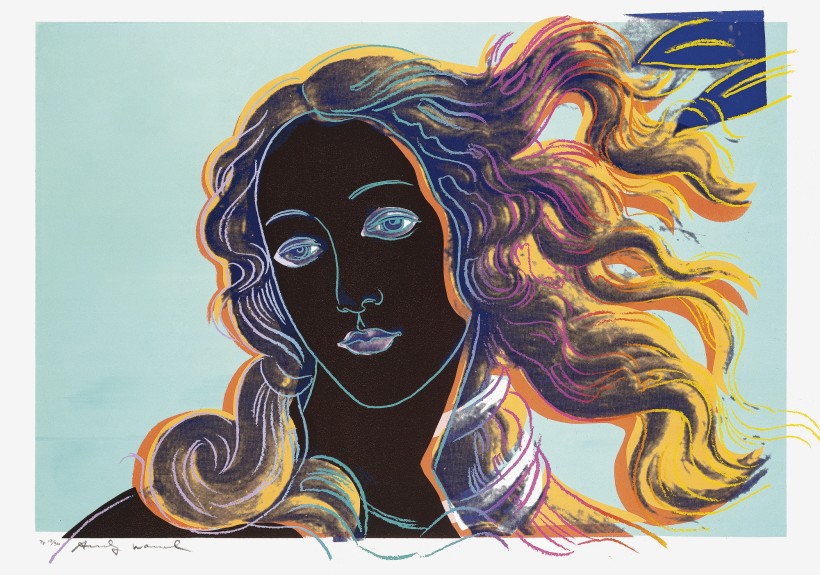
I just love this Warhol image for Retrograde Venus!
Venus
Venus has come to a stop and is entering retrograde motion on October 5th. For all of us, this will be an opportunity to slow down and retrace the steps we have taken towards happiness, as well as look closely at our relationships and our styles of relating. It may feel like a slow-down our happiness or relationships are challenged right now, but every challenge is an opportunity for our own self-development. It’s a good time to work on developing new skills in relating, whether by a communication class, couples’ workshop, or any personal development coaching work.
You may also experience things slowing down in the areas of your life ruled by Venus in your natal chart, different for each Vedic rising sign.
Jupiter
For a few more days, Jupiter and Venus are joined in sidereal Libra, but Jupiter will complete his transit here and move into sidereal Scorpio on October 11th. This next Jupiter transit will last through November 4, 2019. Jupiter in Scorpio can expand our opportunity to connect with the mystic. The depth of self-inquiry and self-development practices will grow during this period. Passions can be heightened and intensified, and our philosophical warrior will be strong.
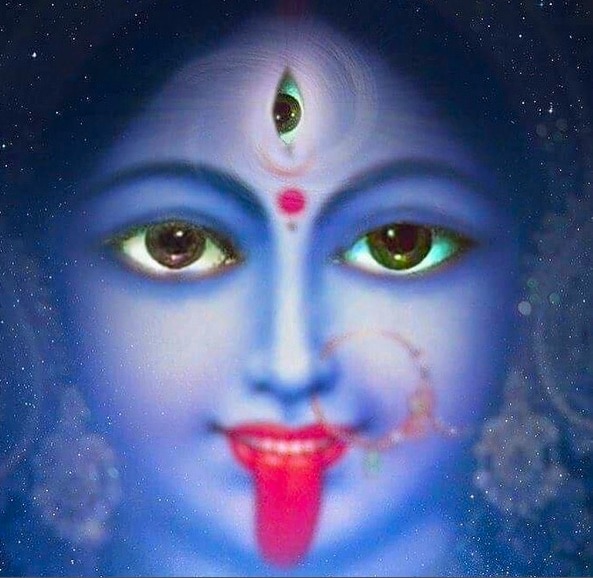 Navaratri
Navaratri
The nine nights of the goddess is a festival celebrated by Hindus worldwide. Navaratri will begin on the first night of the waxing Moon this lunar cycle, starting October 9th. On each of nine consecutive nights (nav + ratri), we can worship the goddess, Devi, through her many forms. Most notably this festival celebrates the goddess Durga in nine of her forms, but in other parts of India the festival commemorates Durga/Kali, Lakshmi, and Sarasvati for three nights each.
Devi is the creatrix, the warrioress, the nurturer, the purifyer, the protector. She can be found in the innocent and fertile maiden as well as the wise and learned crone. She is both the nurturing mother, and the one who gives “tough love.” The impassioned lover, the devoted bhakta, the disciplined yogini. We see Devi appear through us in innumerable manifestations. Through her many forms, she teaches us and offers us countless blessings–love, compassion, courage, learning, discipline, surrender, success, enlightenment, and bliss.
This festival is a time for honoring and celebrating the supreme feminine power in all her glory, and the many blessings she bestows upon us. Stay tuned for daily updates on how to connect with the many forms of the Goddess.

by Somya Devi | Feb 26, 2018 | Conjunctions, Planets Changing Signs, Retrograde
Full Moon with the Power of Pleasure
This month’s Full Moon will peak in Leo on Thursday, March 1st, at 4:51 pm PST, near the bright star Regulus. It falls in the Vedic nakshatra called Purva Phalguni, a star-sign related to rest, relaxation, and pleasure, ruled by Bhagha, the god of wealth and marriage.
Aquarius-Leo Contrast
In contrast to the austerity of the Shivaratri new Moon where we began this lunar cycle, the full Moon here bestows the gifts of power, pleasure, and spiritual wealth that come to us based on our merit. Meditation and yogic practices lead to spiritual abundance, just as doing good works and service to the world helps with material happiness.
The Aquarius cycle which began just after Shivaratri has oriented us towards self-sacrifice, and focusing our energy on service to something greater than ourselves. In contrast, the full Moon in Leo illuminates the potential for personal power and prosperity. The lesson of Leo, however, is to use this energy generously, sharing it with those around us, not hoarding it greedily. The nature of the Sun is sattvic, and the true potential of Leo is to purify ourselves and then share our divine light with others. Like the Leonian archetype of the King or the father, one with power is meant to take care of those around him to create happiness for everyone, not only himself.
Purva Phalguni
Purva Phalguni is the second of three nakshatras that span Leo constellation. The first is Magha, “the mighty,” which is all about strength, power, and achievement, symbolized by the throne. After having reached the throne, we may become a bit more carefree and take some time to rest and enjoy life in Purva Phalguni. Enhanced by Venus’ influence, this nakshatra is a place where we seek beauty, luxury, and sexual passion. The full Moon here reminds us of the need for rest and relaxation, after the hard work that has led us to our achievements. Its symbol is a swinging hammock.
The ruling deity here is Bhaga, the god of wealth, marriage, and delight. Similar to Lakshmi, he bestows both material as well as spiritual prosperity. He is said to be blind, sharing this wealth with people of all walks of life. The fruits we receive are based on our merit from past actions, whereby good deeds and spiritual practices yield the most.
Venus
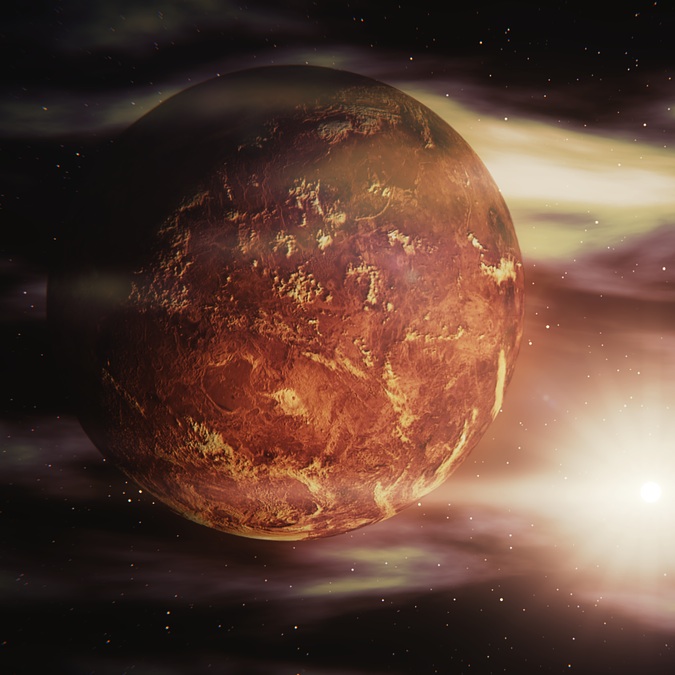
Link to Personal Venus Reading
The planet of pleasure has a very strong influence this month. We begin the lunar cycle with Venus making a full aspect onto the Moon from his position in Aquarius (joined Sun and Mercury), enhancing our pleasure-seeking nature. A few hours after the full Moon, Venus will transit into Pisces, his sign of exaltation, where he’ll travel through March 25th. With Venus in Pisces, our desire-nature feels enhanced and more given to wild-abandon, in the free-flowing, other-worldly water sign. If you have tendencies towards over-indulgence or addiction, now is a time to watch these closely. At the same time, the exalted potential of Venus in Pisces is for us to allow our desires to evolve into desires that align with our highest principles, or the divine will itself.
On Friday March 2nd, Mercury creeps into Pisces as well, and will be close enough to Venus to begin a planetary war that will last through the early morning on Tuesday. With practical Mercury debilitated and at war with Venus, you’re likely to experience “heart” winning out over “head” for a few days. After they separate more on the 6th, Mercury may benefit more from his neecha bangha position (wherein his debilitation is modified by joining exalted Venus). At that time, the beauty-seeking nature of the Venus may support Mercury as he navigates the impractical waters of Pisces, where he is normally less comfortable.
The Nodes
As we move away from the eclipse period, we have also moved out of the heavy nodal influence caused by ongoing kala sarpa alignments. When Venus moved into Aquarius on February 5th, he broke the cycle that has continued for half the month since August. We now have the slower-moving planets on one side of the Rahu-Ketu axis, and the faster-moving ones on the other side, so no more kala sarpa cycles are possible until late July.
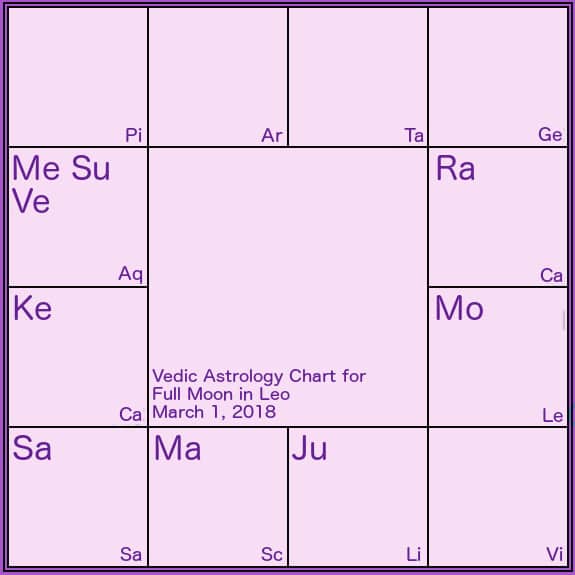
Jupiter Retrograde
Jupiter will come to a stop on March 8th before beginning retrograde motion through October 11th. Whatever Jupiter influences in your life may seem to slow down and back up, and call for a lot of reflection through this time. In general, we could all have some second thoughts on education, teachers, or principles while Jupiter is in retrograde motion.
Lessons in Love
With the prominent influences of Venus and Bhaga on this Full Moon, this is a time to really explore your relationship with the planet of desire. Depending on how Venus functions in your natal chart, there is a certain way that he acts through you in general. For some people, an intelligent Venus helps them to make good compromises in relationships, have a lovely aesthetic or artistic ability, and healthy boundaries around sensual pleasures. If Venus is afflicted, it can cause tendencies to overindulge in these things, or have issues around boundaries, relationships, or luxury. Venus also influences two particular arenas in your life, as per your rising sign. Now is a good time to study yourself and your chart to see how your desire-nature arises, and to work on improving your relationship with Venus.
This month only I’m offering personal focused Venus readings, available here.
You can also get a full life course reading to understand even more about your life from the chart.

by Somya Devi | Sep 20, 2017 | Astrology, Events, Holy Days
Maha Navaratri 2017 begins today! In this important Hindu holiday, we celebrate the Goddess through “the great nine nights” (nav = nine, ratri = night). This festival will run through September 30th, the first ten days of this new lunar cycle. Goddess, Devi, Shakti, Durga, Divine Mother—the many names and forms all represent the dynamic and fluid feminine power that enlivens all of existence.
She is the creatrix, the warrioress, the nurturer, the purifyer, the protector. While she’s in the innocent and fertile maiden so is she the wise and learned crone. Both the nurturing mother, and the one who gives “tough love.” The impassioned lover, the devoted bhakta, the disciplined yogini. We see Goddess appear through us in innumerable manifestations. Through her many forms she teaches us and offers us countless blessings–love, compassion, courage, learning, discipline, surrender, success, enlightenment, and bliss. This festival is a time for celebrating the supreme feminine power in all her glory, and the many blessings she bestows upon us.
As with most Hindu celebrations, this festival correlates with the lunar calendar, and thus begins on the first day of the waxing Moon after the New Moon of September 19th. The celebration is through the “nine nights” of 21st through 29th, and into the eleventh morning known as Vijayadashami, “the day of victory,” on September 30th in some places (because of the way the lunar phases correlate with the solar days… Check the Vedic panchanga for your city to see the exact dates for Navaratri where you are.). Worship during Navaratri is most generally dedicated to Goddess in the form of Durga, the demon-slayer, but there is much nuance and variation to practice and forms of celebration throughout India. Above all, Navaratri is a community celebration of the Divine Mother, and the love, abundance and protection she gives.
There are many Navaratri celebrations throughout the year, but the fall-time Navaratri is the most widely celebrated, and is thus called Maha Navaratri – “the great nine nights”. It correlates with the time of the harvest, a time to give thanks for the abundance of the year’s work. Grains and crops are often offered to Devi as part of the celebrations. Ritualistic worship (puja) typically occurs in homes and temples throughout the nine nights and into the tenth morning of celebration.
The Many Forms of Goddess
Durga-Lakshmi-Sarasvati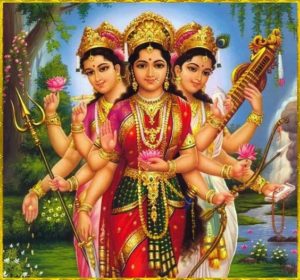
In Kerala and other places in India, the first three nights of worship are dedicated to Durga (the invincible), the next three to Lakshmi (Goddess of prosperity), and the final three to Sarasvati (Goddess of learning). Durga, also celebrated as her incarnation of Kali, helps us to destroy and remove the negative tendencies in our minds and hearts, freeing us from the obstructions to our spiritual and material pursuits. Lakshmi helps us to cultivate positive qualities like compassion and devotion, and leads us towards both spiritual and material prosperity. Sarasvati assists us in attaining knowledge and wisdom, through the illumination of our consciousness. She aids in awakening sattva, the quality of purity, and the flow of prana, the vital breath. After removing inner and outer obstacles and cultivating prosperity through virtuous qualities, our devotion, service, and practice help us to attain a state of peace, bliss, and oneness.
Sarasvati-Lakshmi-Kali/Durga
In the Kali Kula (Kali school of worship) in northeastern India, Sarasvati is worshiped on the first three nights, followed by Lakshmi on the next and then Kali/Durga on the last three. Sarasvati, Lakshmi, and Kali/Durga (Kali emerged from Durga) are also known as the consorts of Brahma, Vishnu, and Shiva. The Goddesses, therefore, provide the shakti to the cosmic processes of creation, preservation, and death (transformation), similar to their male counterparts. Consequently, worship in this manner is dedicated to the cycles of life and Mother nature, through birth, then sustenance, then death. Death is not a complete stop, but allows for the regeneration of energy into a new cycle once again.
9 Forms of Durga
Throughout India, the nine nights of Navaratri are often dedicated to 9 different incarnations of Durga, allowing the worship of many different aspects of Shakti in a gradual evolution. You can read the stories and significance of these 9 goddesses here (or click on Goddess name below), or a more a brief introduction, here:
“Daughter of the mountain”; creative energy, muladhara (root chakra), awakening; Awaken your connection with Goddess today or initiate a new venture, calling on Shailputri for new beginnings.
The ascetic; tapas, discipline, devotion, strength, wisdom, creative abundance; Good day for fasting and meditation, connection with svadhistana (sacral chakra).
Warrioress; protection, courage, grace, manipura (solar plexus); Destroy your internal obstacles by offering them to Chandraghanta.
4. Kushmanda (September 23rd)
Creatrix of the “cosmic egg”; strength, health, happiness, success, relationships; Connect with the vital Sun energy and the anahata (heart chakra) today.
“Mother of Skanda/Kartikeya”; motherly love, nourishment, protection, purity; Call on divine truth through the vishuddha (throat chakra), invoking Skandamata to lead you towards victory.
6. Katyayani (September 25th)
Warrioress who destroyed Mahishasura (the buffalo demon); victory, devotion, strength, removing obstacles; Meditate on these qualities of Goddess through the ajna chakra (third-eye) today.
7. Kalaratri (September 26th)
“Dark/black night,” representing a fierce form of Durga/Kali; darkness, death, surrender, dissolution of pain; Connecting with the sahasrara (crown chakra), remember that Divine Mother offers love, compassion, and many blessings even in hard times. Even in the midst of apparent darkness, and helps us to go beyond the boundaries of the material body-mind and connect with spirit.
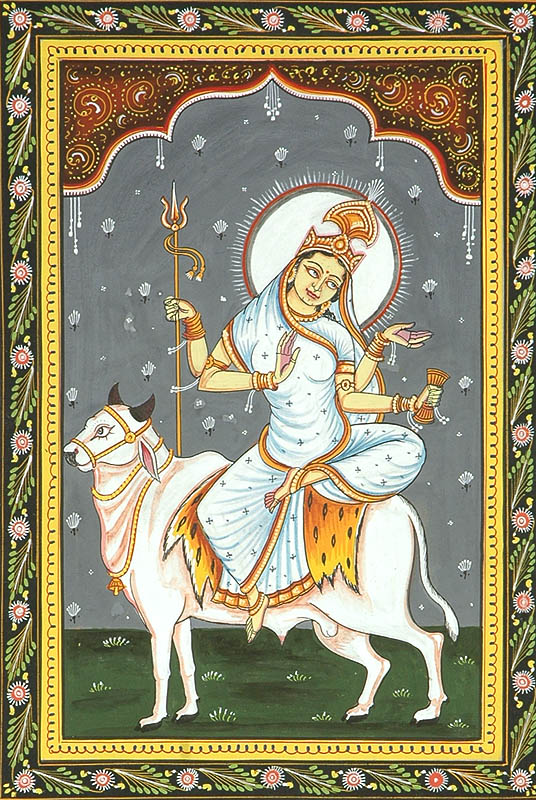 8. Mahagauri (September 27th-28th)
8. Mahagauri (September 27th-28th)
“Great white goddess”; detachment, purification, renewal, protection, virtue; Through detachment and devotion, we emerge purified, shining and radiant after surrendering in the dark night. Rejuvenative herbs and foods are good today.
Goddess of “siddhis”; magical, spiritual or mystic powers and blessings, fulfillment of desires, devotion, divine union; Invite Goddess to reveal her presence to you everywhere and in every moment.
Personal Practice Ideas for Navaratri
If possible, it is great to reduce our workload and gather with community at local temples or places of worship. We can also create a little time and space at home and conduct some personal practices to celebrate Goddess energy. Dive into your own heart to connect with the inner Goddess in the ways that resonate most with you! Here are some ideas to do at home or with a group throughout the nine nights of Navaratri:
Altar
Create a sacred space, a Durga altar, or a Goddess altar. Even if you already have one, you can refresh it in some way or rearrange it specifically for Navaratri. Include images or statues of the Goddess(es) you have a relationship with. This could be according to one of the groups of forms above.
Invocation
Even if you don’t have much time, dedicate at least a few minutes each day to connecting with the Divine Mother in front of your altar, calling her energy into your life and being.
Journal
Write in your journal about what qualities of Goddess you perceive and connect with. What aspects would you like to strengthen or to cultivate more deeply? Write any and all prayers and offer them to the form of Goddess that appeals to you.
Light
Offer light to illuminate Goddess’s power, helping her to shine more brightly into the world and your life. You can light a candle by the altar and keep it burning when you’re at home. You can even keep an electronic tealight on symbolically when you are away.
Flowers/Grains
Offer flowers or grains (even a small dish of dried rice) to celebrate Devi in the form of mother nature, fertility, the abundance of the harvest, and the cycle of life.
Offerings
Offer incense, bells, water, or food if you feel called, by placing it on the altar, or mentally offering it to Goddess throughout the day. You can also offer something symbolic of your own work or practice, whatever you have been cultivating for harvest through the year. In offering this you surrender the fruits of your efforts to the Divine Mother.
Fasting
Some people choose to fast in some variation, if this is something you have practiced before. This might include fasting during the day, fasting with only milk or fruit, or abstaining from alcohol and non-vegetarian foods during Navaratri.
Chanting
Chanting the Devi Mahatmyam, a verse to the Goddess, is a common practice during the nine-night festival. You can also chant another Goddess mantra or songs that are special to you and your relationship with Devi.
Jai Ma Durga!
Personal Vedic Astrology readings and forecasts are available Here.
Did you like Maha Navaratri 2017? Please Like, Comment and Share!
Save
Save
Save
Save
Save














